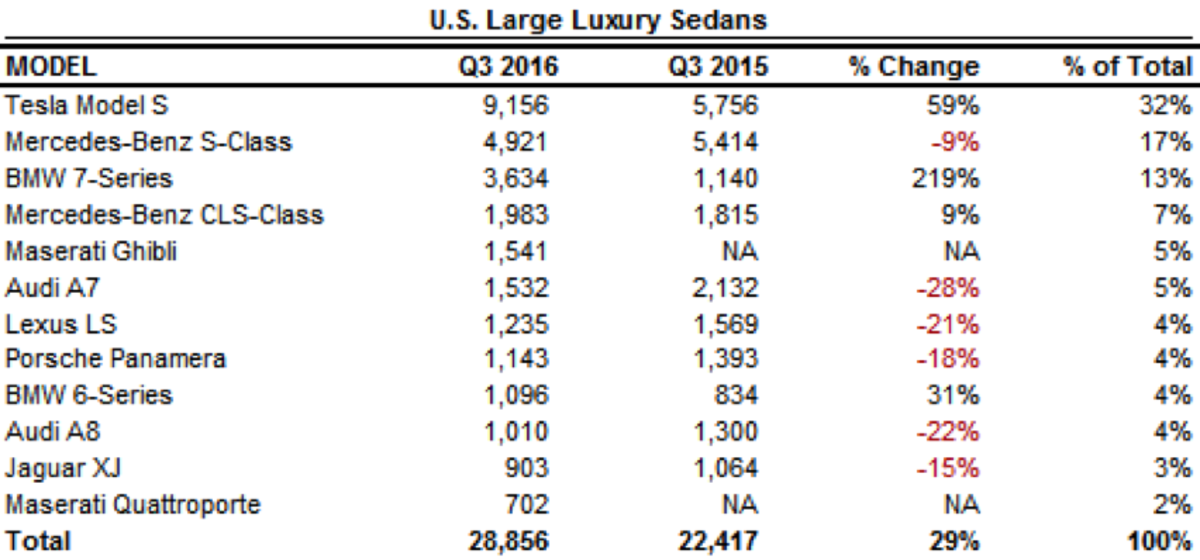Tesla Dominates U.S. Luxury Sedan Sales
When it comes to big premium cars, the automaker says BMW, Mercedes, and Audi aren’t even close.
Tesla Motors Co. is facing some serious challenges keeping up with its ever-expanding ambitions, but one thing is certain: It’s selling a lot of luxury cars.
Tesla’s U.S. sales of its Model S sedan jumped 59 percent over the same quarter last year, increasing its already sizable lead among large luxury cars, according to internal third-quarter sales numbers—which Tesla usually keeps confidential—and competitor data compiled by the automaker. Tesla says it’s now responsible for almost a third of all sales in the segment. Its nearest competitors are the newly updated BMW 7-Series and the Mercedes-Benz S-Class.

Source: Tesla internal sales data and competitor information compiled by the automaker.
Spokespeople for Mercedes and BMW didn’t immediately respond to email requests for comment on Tesla’s sales data made after normal business hours.
In the luxury SUV market, Tesla says its new Model X sold 5,428 U.S. cars for a 6 percent market share in the third quarter. That’s its highest mark yet after production issues plagued the rollout of the car earlier this year. According to Tesla’s data, the Model X outsold Porsches and Land Rovers but trailed seven SUV models made by Mercedes, BMW, Cadillac, Volvo, Audi, and Lexus.
Tesla Chief Executive Officer Elon Musk had been pushing employees to sell as many cars as possible in an effort to achieve a profitable quarter before the company needs to increase spending. Tesla is trying to acquire SolarCity Corp. and preparing to roll out its lower-priced sedan, the Model 3, late next year.
The numbers represented in these two classes of luxury vehicles are small compared with the 17 million cars and trucks sold in the U.S. last year. Tesla is hoping to replicate the success of the Model S with its $35,000 Model 3—a daunting prospect that includes completion of a massive battery factory in Nevada, expansion of its factory in California, and the build-out of a global sales and service network.
The Model 3 will be one of the more affordable cars in the entry-level luxury class, and if Musk can achieve his forecast of building 500,000 Teslas a year by 2018, the automaker could find itself atop three categories of luxury cars. But that’s a big if.
Article and media originally published by Tom Randall at bloomberg.com